Research portfolio
Here I present research projects that I took part in since September 2019. The publications related to these and earlier projects can be found in the ‘publications’ page.
Alarm pattern recognition

During the 13th Montreal Industrial Problem Solving Workshop, I worked on a project for the Hitachi on the alarm pattern recognition. Power grid operators regularly have to deal with power disturbances (e.g. caused by strong wind or thunderstorm), which often activate multiple alarms at the same time. Our goal was to identify causal/process-based relations between the alarms in the real data, which could help with real-time tool for disturbance problem solving.
Part of our team focused on finding similarities in historic alarm gloss using clustering algorithms, while I led works on reconstructing casual relations between alarms using Bayesian inference and identification of the cause of the alarm using maximum likelihood approach.
Research team: Moncef Chioua, Nicholas Goulet, Antony Hilliard, Slim Ibrahim, Piotr Morawiecki, Benjamin Nguyen, Rohan Singh, Judith Tavarez
Image description: A power crew replaces a pole broken by Hurricane Ike in Houston, Texas. Photo by Greg Henshall / FEMA.
Modelling tailing dam failures
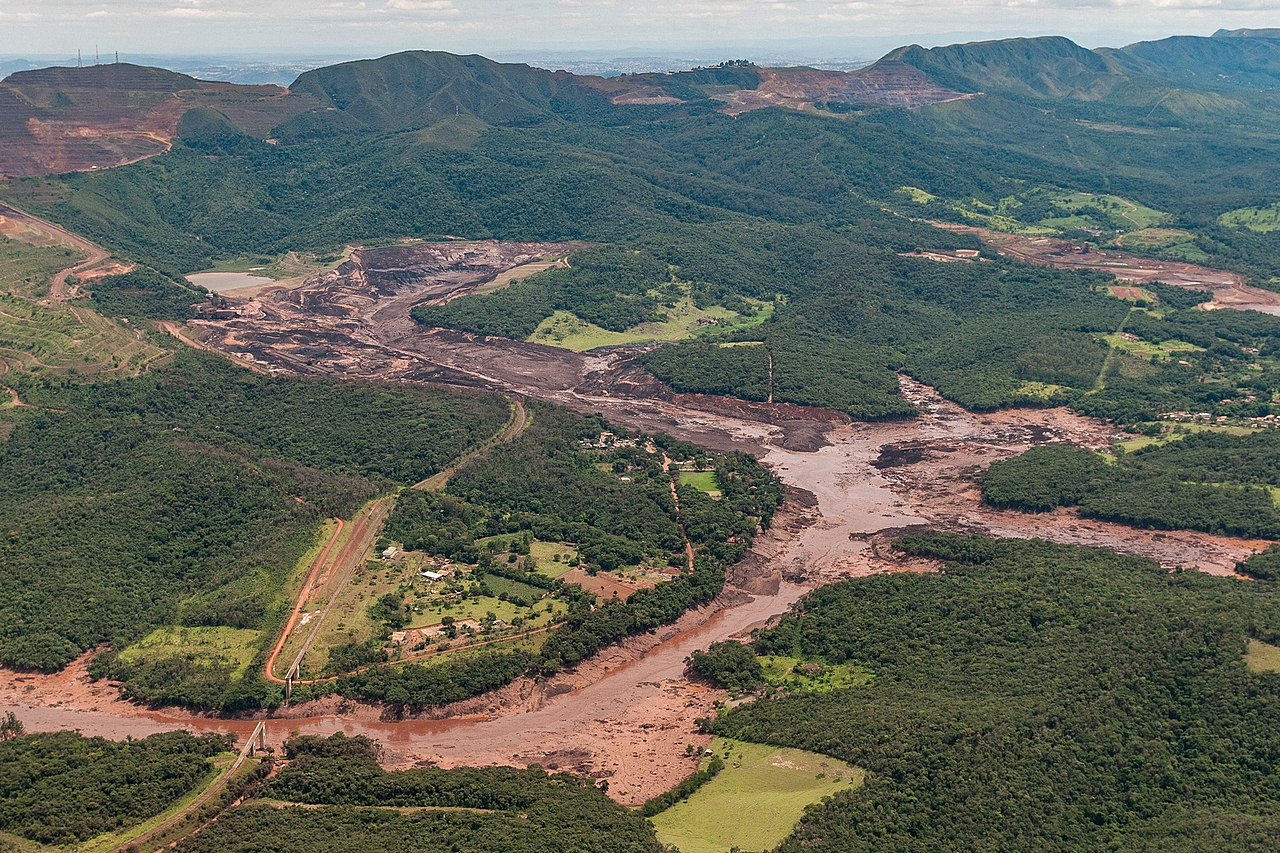
During the Integrative Think Tank in Chile organised by SAMBA CDT and CMM (Universidad de Chile), I worked on a problem for Chilean mining company JRI. The problem concerned failure of tailing dams, which are used to store byproducts of mining operations. The goal was to develop mathematical model failures caused by the erosion of the dam from liquid tailings seeping through the base of the dam.
The model we developed incorporates the accumulation of surface water at the reservoir, with the infiltration of water through the dam. We used it to investigate effect of dam structure on its safety, and demonstrated that it can also be used to find optimal placement of drainage pipes, to minimise the risk of failure. Further study is required to understand its structural resilience for environmental factors, such as extreme rainfalls and earthquakes.
Research team: Cassiano Antonio, Vincente Cabezas, Bruno Hernandez, Piotr Morawiecki, Tristan Pryer
Image description: Damage caused by the dam collapse in Brumadinho, Brazil. (CC BY-SA 2.0) by IBAMA. Watch the collapse in this YouTube video
Knots to Watts: generating power from water current

During 167th European Study Group with Industry organised by University of Kent. I worked with a team on mathematical model of WITT gearbox. It is a device developed by WITT Energy, which generates power from water current using a 6 degree motion energy harvesting technology. I can be attached e.g. to sea buoy, seabed or placed in a turbulent river; the internal gearbox converts vibrations of the device into electric energy.
We developed three models. First model describes the internal mechanism of the gearbox and how external forcing in converted into power. Second one allows to find how big forcing acts on the gearbox mechanism depending on external vibrations of the device. The last model allows to find the external vibrations of a device for a given configuration (way it is placed in the environment, e.g. in the sea).
Research team: Emily Butler, Yatin Darbar, Pamagiotis Kaklamanos, Andrew Lacey, Ellen Luckins, Piotr Morawiecki, Nam Nguyen, Eduardo Peroni, Colin Please, Cameron Spalding, Joe Roberts, Robert Whittaker, Henglei Xu, Maxim Zyskin
Image description: WITT gearbox (author: WITT Energy)
Predicting effect of water extraction
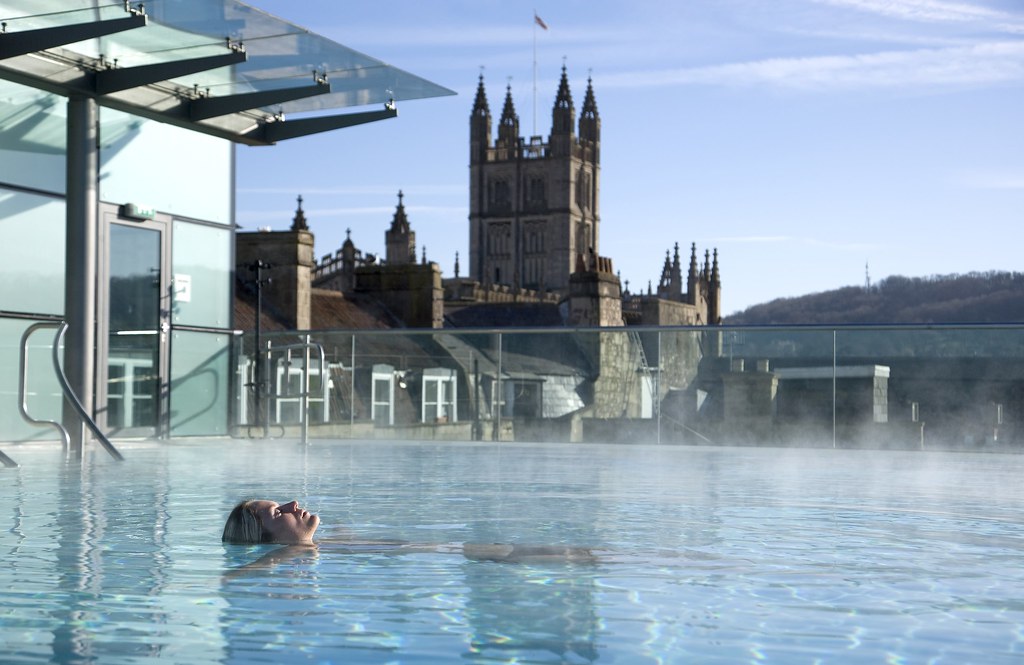
During the 16th Integrative Think Tank, I helped team working in a project for Schlumberger on predicting the effects of the deep groundwater extraction. A particular case that we focused on during this week was extraction of groundwater from carboniferous limestone through which water from Mendip Hills travels to Bath hot springs.
We modelled a group of households extracting the hot underground water through boreholes, and investigated how would they affect water flow and temperature when it reaches the hot water spring in Bath, and whether the flow can possibly stop completely within the current regulations on groundwater extraction. We developed both physical and conceptual stochastic models addressing this problem.
Research team: Piotr Morawiecki, Andrei Sontag, Beth Stokes, Phil Trinh, Fraser Waters, Mike Williams
Image description: Thermae Bath Spa supplied by the hot spring (author: Visit Britain)
Approximated models of wind turbine dynamics
*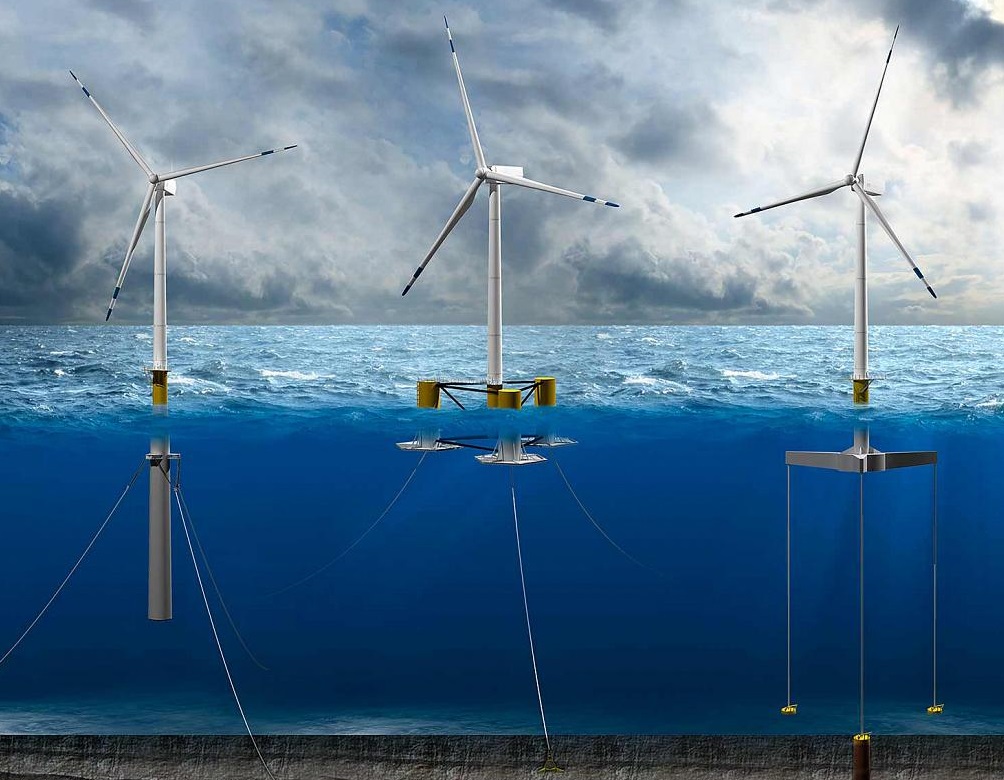
During the 15th Integrative Think Tank, together with Bath Beacons group, we were working on developing mathematical models of wind turbine dynamics. Complex models currently used by engineers consist of dozens or hundreds of parameters and numerous modular “blocks”. In order to better understand the imporance of the parameters on stresses experienced by the wind turbine and its overall performance certain approximations are used, however their limitations are not well-understood.
During this one week workshop we set grounds for a mathematical project on deriving these approximations in a rigorous way and quantifying their accuracy. We formulated two toy models describing stresses of a fixed turbine and dynamics of a wind turbine attached to the sea floor using mooring lines, and quantify the effect of different simplifications.
Research team: Christian Jones, Rick Lupton, Piotr Morawiecki, Timothy Peters, Philippe Trinh
Image description: Floating wind turbines anchored to the sea floor (author: Joshua Bauer/NREL)
COVID Safety in Large Events

During a RAMP Virtual Study Group in July 2021 I worked on a collaborative project with Bath Rugby on maintaining COVID safety during large outdoor events, with the particular focus on reopening the Rugby stadium in Bath. The goal was to model the COVID risk in different phases of the event, and use conclusions from mathematical models to suggest mitigation strategies.
We considered different scenarios, which were investigated independently by different subgrouops. These included finding ways to reduce the queues length and their arrangement, optimising movement of spectators to bars and toilets during breaks and finding optimal way for safe seat allocation (e.g. by reducing total occupancy and avoiding having many unvaccinated people seating close to each other). We used Monte Carlo simulations to quantify the effect of different mitigation strategies.
Research team: Tosin Babasola, Chris Budd, Dario Domingo, Michael Farmer, Jessica Jay, Sabrina Kombrink, Piotr Morawiecki, Noemi Picco, Hadrien Salat, Kit Yates, Fanqi Zeng, Tina Zhou
Image description: The Recreation Ground in Bath (UK) used by Bath Rugby during the rugby union season (source: www.bathrugby.com)
Modelling gas temperature variation in a heat pump
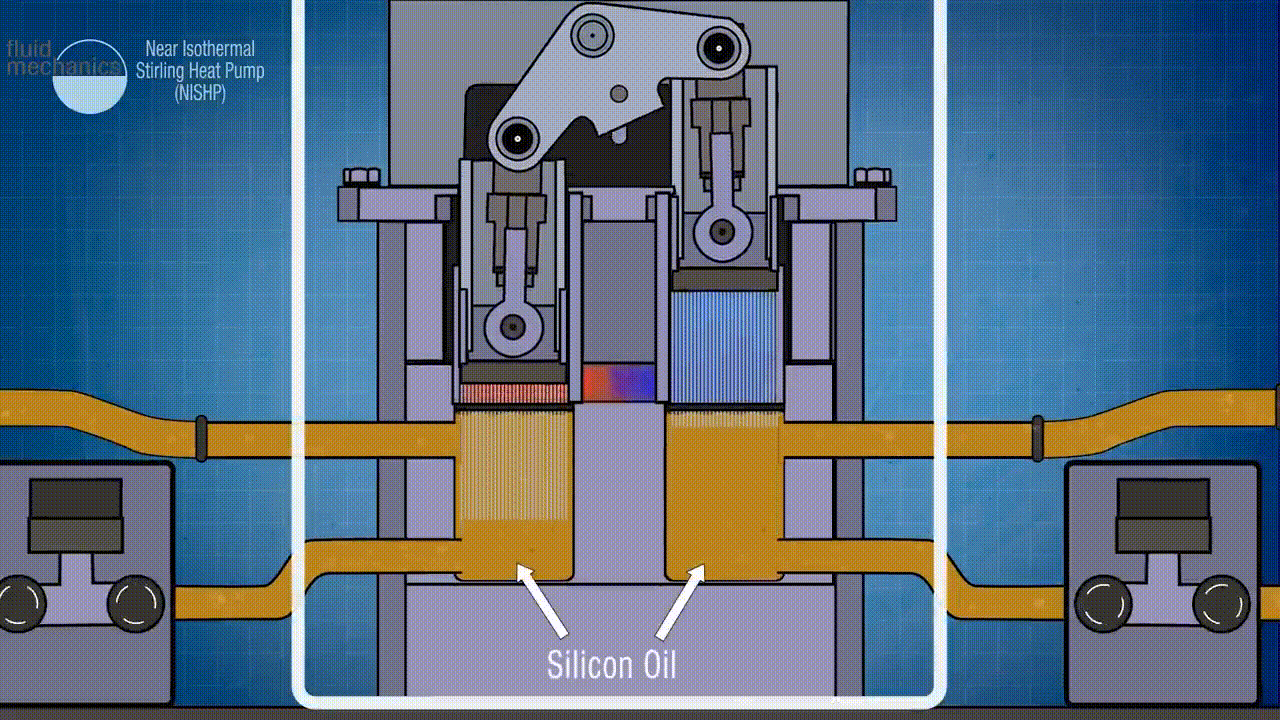
During a Virtual Study Group in Edinburgh in June/July 2021 I worked on a project on optimising heat pump performance. The main goal was to understand how to estimate the variation of a gas temperature in the Near Isothermal Stirling Heat Pump (NISHP) developed by the Fluid Dynamics Ltd.
The project was very successful, as we proposed a simple model based on 1D heat equations, which shows how the temperature of the gas in expander and compressor of the heat pump develops as a result of the work done by the piston and heat exchanged with high conductive fins attached to it. The model nondimensionalisation and asymptotic methods allowed us to obtain approximated analytic solution. This way we indicated three main factors affecting temperature variation, which were consistent with numerical tests we conducted as well as experimental data collected by Fluid Dynamics Ltd.
Research team: Michael Crowley, Matthieu Dolbeault, Zak Long, Piotr Morawiecki, Jonna Roden, Weizhu Wang
Image description: Near Isothermal Stirling Heat Pump developed by Fluid Dynamics Ltd. (source: YouTube video)
Estimating conductance using network representation

During the 165th European Study Group, we were solving problem for Peratech company related to modelling composite structures. We were asked to find efficient way of representing high-conductive cylinders distributed randomly in low conductive medium in form of a network, which then can be used to estimate the conductance of the material.
I worked on modelling the electric flow between nearby cylinders and representing it using weighted network. Two cases were considered: one in which we have conductive medium with much lower conductivity than cylinders, and second in which we have insulating medium, through which electron can move through direct contact between cylinders and via quantum tunnelling process.
Research team: Simone Appella, Anvarbek Atayev, Oliver Bond, Ben Collins, Nikolai Fadeev, Andrew Lacey, Mateusz Lichota, Piotr Morawiecki, Hilary Ockendon, John Ockendon, Davide Polvara, Lorenzo Quintavalle, Canxin Shi, Eddie Wilson, Yang Zhou, Ellen Powell
Image description: Finite Volume Method allowed us to find electric flow between two isolated cylinders and resistance between them.
Modelling competition in pharmaceutic research

During the 13th Integrative Think Tank, I worked on problem from a worldwide pharmaceutic company, Roche. The problem concerned developing methods for prioritising drug research portfolio, i.e. deciding which drugs should be developed in each funding period. We both worked on extending existing economic portfolio optimisation methods as well as using game theory to involve impact of competitors on expected profit.
Game theoretic approach allowed us to formulate interaction between competitors in form of a mathematical model, which was used to: 1) develop fundamental heuristics based on analytically found Nash equilibria in few simple scenarios, and 2) assess performance of different numerical approaches, which can be used to find optimal strategies in more complex scenarios.
Research team: Alex Cox, Piotr Morawiecki, Mehar Motala, Kevin Olding, Robbie Peck, Timothy Peters
Automatic detection of anomalous crowd behaviour

During a Virtual Study Group in December 2020 I worked on developing methods for automatic anomalous crowd behaviour for UK’s Government Communications Headquarters. Given a video of the crowd (e.g. CCTV footage) we aimed to highlight people behaving differently than others (e.g. based on their moving pattern), which could help police or event organisers to react quickly and avoid dangerous situations.
We analysed in detail two numerically generated scenarios, one inspired by incident which took place during a parade in Poland (see image on right) and one illustrating a group of pickpockets moving through a crowd (see parade and concert videos). We extracted parameters describing how people properties differ from their k-nearest neighbours, aggregated them using Principal Component Analysis (PCA) and used DBSCAN clustering algorithm to highlight groups of people behaving differently. It allowed us to accurately analysed both scenarios.
Research team: Nikolai Bode, Chris Budd, Kieran Calvert, Nick Malleson, Piotr Morawiecki, Martin Munro, Stephan Onggo, Kieran Quaine, Jonathan Ward
Image description: Spontaneous aggressive crowd behaviour during a generally peaceful parade during Poland Independence Day 2020. (source: YouTube video)
Mathematical modelling of ice crystals icing in jet engines

During 12th SAMBa Integrative Think Tank we were working on research projects for two partners, Rolls-Royce and Novartis. The projects for Rolls-Royce involved modelling of deterioration of turbojet engines caused by different environmental factors (such as volcanic ash, sand and dust). One of the most common risks is caused by icing of engine components (see this YouTube video) occurring while flying through clouds at high altitudes. Understanding the impact on icing on engine deterioration is important, when signing power-by-the-hour type contracts, where turbojet engine producers are responsible for engine maintenance and have therefore have higher financial risk related with potential engine damages.
During one week workshops firstly we developed complex mathematical model of icing process, capable of predicting unstable ice particle growth more accurately than commonly used models, and run proof-of-concept numerical simulations. Secondly, we developed an optimisation framework for finding optimal flight route, which by avoiding regions of harsh environmental conditions minimised fuel consumption, engine maintenance costs and its failure risk.
Research team: Tosin Babasola, Trishen S. Gunaratnam, Piotr Morawiecki, Laura Oporto, Katie Phillips, Tony Shardlow, Hui Tang, Philippe Trinh
Image description: Clouds through which airplane is flying consist of both supercooled ice particles and ice crystals, which can cause engine icing.
Quantifying risk under deployment uncertainty in radio spectrum management

The project was run in collaboration with Transfinite System during 162. European Study Groups with Industry organised by University of Leeds. This problem concerns an issue faced by regulators on whether to grant a new operator permission to use a region of the spectrum before all the details of the new system are known, for instance deployments of 5G infrastructure.
We improved previously used Monte Carlo methods by introducing realistic constraints on the location of deployed radio antennas and demonstrated their effect on risk estimation in real-life scenarios. Moreover we developed an alternative semi-analytic approach, which is much less computationally demanding and gives more precise estimates.
Research team: Chris Budd, Ian Flood, Deqing Jiang, Piotr Morawiecki, John Parker, Yudi Xiao
Image description: Deployment of 5G radio tower may interfere with the existing radio links. (CC BY-SA 2.0) by Christoph Scholz
RAMP Environmental and aerosol transmission

RAMP (Rapid Assistance in Modelling the Pandemic) is an initiative in UK, which is bringing modelling expertise from a diverse range of disciplines to support the pandemic modelling community already working on Coronavirus (COVID-19).
I joined RAMP Environmental and aerosol transmission team, which goal is to understand the interaction of exhaled aerosols with environmental air flows (e.g. air conditioning) so as to clarify direct and indirect transmission channels (including via residence of virus on hard surfaces) and help develop informed strategy choices for social distancing measures. I am part of sub-group working on quantifying the probability of infection by contact with contaminated surface depending on the pathogen concentration, type of surface and environmental and skin conditions (temperature, humidity, etc.)
Research team: Philippe Trinh, David Abrahams, Chris Budd, Andrea Cammarano, Marco-Felipe King, Benjamin Jones, Oleksiy Klymenko, Paul Linden, Alison McMillan, Chris Pain, David Sykes, Stephen Wilson, Jonathan Evans, Sophy Bristow, Josh Shelton, Yyanis Johnson-Llambias, Piotr Morawiecki, Michael Short, Clint Wong
Image description: Image of coronavirus captured and colorised at NIAID’s Rocky Mountain Laboratories. (CC BY-SA 2.0) by NIAID
Feeding Vulnerable People

During the Virtual Study Group on 29 June - 01 July we conducted a research project for FareShare - the UK’s largest charity fighting hunger and food waste. Since lockdown they observe an unprecedented demand for their services, in addition the food surplus levels have been drastically altered. We tried to understand and forecast how demand for surplus food products is likely to change over the coming months.
We used two approaches - a fully data-based statistical model and a dynamical model describing economic and social changes. The dynamical model was verified and calibrated using the results obtained from the data-based approach, and so it can be used for long-term predictions. Second team was developing mathematical models to support incentivising relationships with food producers.
Research team: Tosin Babasola, Martine Barons, Mel Beckerleg, David Brown, Michael Coughlan, Dan Clarkson, Charlie Egan, Nabil Fadai, Andrei Gagarin, Rebecca Hoyle, Joerg Kalcsics, Andrew Lacey, Elena Leggett, Wayne Martindale, Sovan Mitra, Piotr Morawiecki, Markus Owen, Philip Palmer, Bernard Piette, Colin Please, Lars Schewe
Image description: In the last 25 years FareShare has provided food equivalent to 236.8 million meals (image source: www.fareshareyorkshire.org)
Effect of lockdown on meeting zero-net emission targets
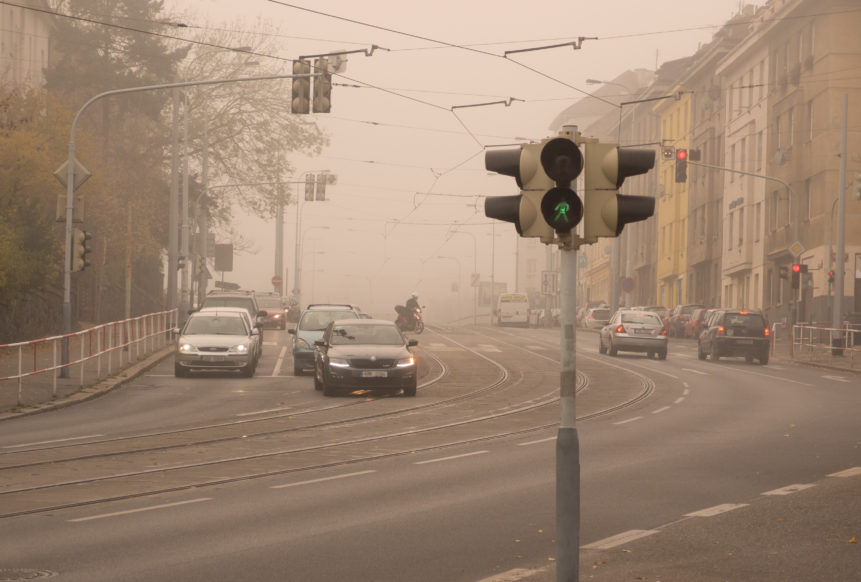
Together with students from Water Informatics: Science & Engineering CDT in University of Exeter we took part in the <a href=https://digitalenvironment.org/home/covid-19-digital-sprint-hackathons/>2nd NERC Hackathon challange</a> organised by the Natural Environment Research Council. Based on a range of data collected during lockdown we analysed how working from home impacted CO2 emissions in UK. Particularly we investigated the impact of different levels of restrictions on the change of traffic volume and the change in energy consumpiton.
The results and codes are available at: coronasaurus_NERCHackathonTwo_LearningFromLockdown GitHub repository. We were awarded with the third place for this project.
Research team: Cristina Corti, Ari Cooper-Davis, Mikkel Lykkegaard, Piotr Morawiecki, James Rand
Impact of air quality on COVID-19 spread

The project was run as a part of <a href=https://digitalenvironment.org/home/covid-19-digital-sprint-hackathons/> NERC Hackathon</a> organised by the Natural Environment Research Council. In a group of four students we built an open-source spatio-temporal Bayesian framework in R allowing to analyse the impact of air pollution on infection rate of COVID-19. Its flexible structure allows the users to easily model the effect of wide range of environmental, economic and demographic factors. The framework is supplemented with a data sets for the USA and Italy.
We used the developed Bayesian framework to show that the air quality has a significant long-term correlation with the speed of COVID-19 spread. We also at some extend compared the relative effect of different pollutants (SO2, O3, PM2.5, PM10, NO2, CO). We were awarded with the first place for this project.
The framework is available at: BathAirSquad_NERCHackathonOne GitHub repository.
Research team: Daniel Burrows, Piotr Morawiecki, Laura Oporto, Yang Zhou
Beyond traditional modelling in flood estimation

In academic year 2019-2020 I was working on the SAMBa Interdisciplinary Research Project focused on development of better methodologies for studying flood estimation. It is a continuation of a project for Environmental Agency from 7th Integrative Think Tank in 2018.
My role in the team is verifying assumptions of existing statistical models and models with conceptual-physical structure (e.g. Grid2Grid model). I compare their predictions with the physical models based on the laws of hydrodynamics. As a result I hope to find a reason why the predictions of these models sometimes fail for small catchments and propose modifications of existing flood estimation methods to increase the range of their applicability.
Research team: Rosa Kowalewski, Katie Phillips, Yi Sheng Lim, Philippe Trinh (supervisor)
Image description: Flooded A635 road (CC BY-SA 2.0) by Joan Fareham
Modelling the stability of multiphase resins
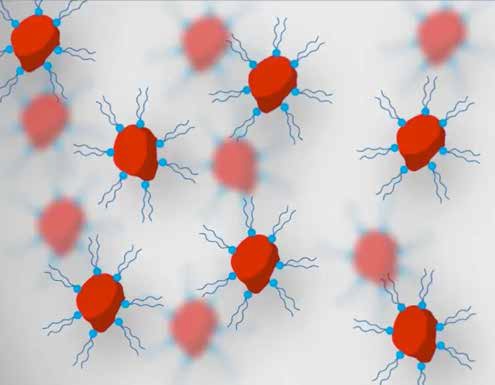
There is a drive to improve the energy efficiency of transportation (Rail, Air, Bus, Automotive etc.) and the use of composites can reduce weight and hence decrease the energy consumption. The composite resins used in these applications require flame retardant additives to be added. Replacement additives are generally solid materials (fillers) that have a variety of shapes and sizes e.g. spheres, spheroids, plates or needles. It is normal that in low viscosity resins, there is separation of the resins and the additives, however under various transport conditions the filler phase can pack hard.
The project was commissioned by the company Scott Bader for KTN Virtual Study Group Pilot in April 2020. The aim of the project was to understand the mechanism by which the hard packing happens and hence determine methods of assessing new formulations for filler separation and hard packing.
Research team: David Abrahams, Eduard Campilo-Funollet, John King, Kristuan Kiradijev, Piotr Morawiecki, Andreas Muench, Colin Please, Megan Povey, Matthew Shirley
Image description: Filler particles with attached polymers (from BYK Additive & Instruments e-book:Wetting and Dispersing Additives)
Measuring distances with multi wavelength interferometry
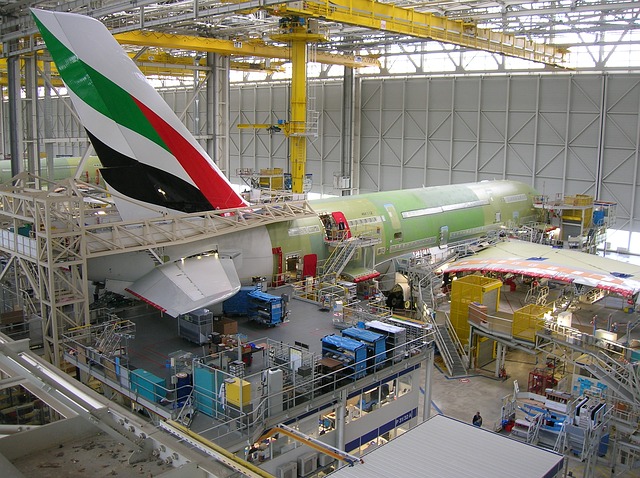
In January 2020, SAMBa organised the 11th Integrative Think Tank with projects delivered by BT and the University of Bath Centre for Photonics and Photonic Materials. I was working on photonics project on finding an optimal method for estimating absolute distances using multi wavelength interferometry.
Firstly, we quantified measurement uncertainties and based on a proposed model we found an optimal method of wavelength selection. Further on, we proposed how the measurement precision can be increased by aggregating multiple measurements and verified its precision numerically. We hope that the project will help developing cheaper methods for high-precise measurement. These are strongly needed in a wide variety of industry sectors such as aerospace, marine engineering and medical technology.
Research team: Piotr Morawiecki, Anton Souslov, Phillippe Trinh, Edwin Watson-Miller, William Wadsworth
Image description: Airbus production
Impact of slope and weather on English highways
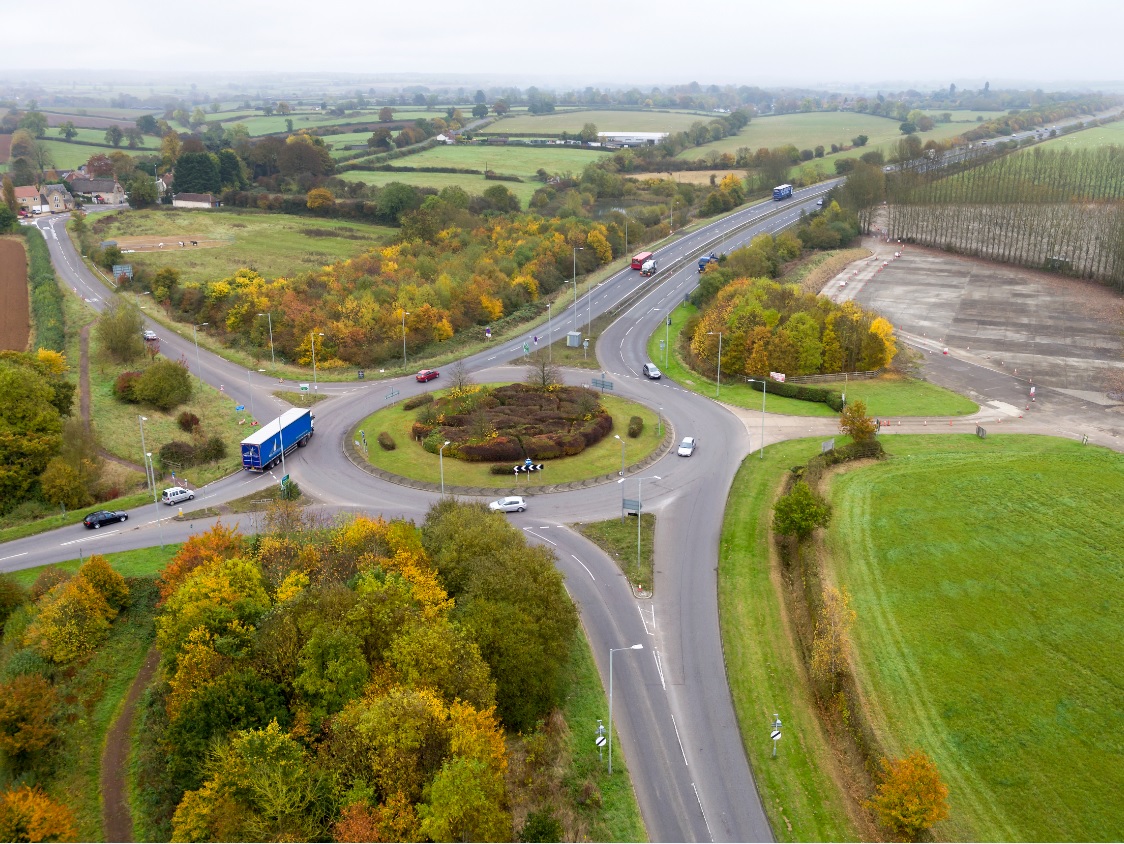
During the Geospatial Study Group organised in Bath on January 2020 I was working in a team on a problem presented by Highways England. They measure average speed across approximately 17,000 sections of road in order to understand how the strategic road network is performing continuously throughout the day. These sections of road have been mapped against a linear network model built of line features but does not account for topography of the terrain and weather conditions.
During the study group project we tried to: 1) understand if there is any relationships between the average speed and identifiable topographic features, 2) predict how the weather interacts with the network and particularly where aquaplaning and/or flooding could occur.
Research team: Evangelos Evangelou, Dominika Malinowska, Nick McCullen, Piotr Morawiecki, Joshua Alexander Redmond, Eddie Wilson
Image description: Aerial photography of A421 (CC-BY-2.0) by Highways England
Crisp alignment and lift-off process modelling

I worked on the optimisation of selected stages of the PepsiCo crisps production line. During the 10th Integrative Think Tank (ITT) team I worked in was modelling different methods of crisp alignment on two supports to find the method, which is most stable. We tested the effect of different forces applied to the crisp and also the effect of different modes of supports’ vibrations.
After the ITT, I also developed a model of the crisp detachment from the conveyor belt during the frying process. The density of the crisp submerged in oil decreases during frying. Eventually the buoyancy force overcomes the gravitation and adhesion forces allowing the crisp to detach from the belt. As the crisp is randomly positioned on the belt, the contact area with the belt can vary significantly, also affecting the adhesion forces. Therefore solving the problem required using a nice combination of physical and statistical modelling.
Research team: Carlos Galeano Rios, Piotr Morawiecki, Eileen Russell, Jeremy Worsfold
Image description: A bag of Walkers - one of PepsiCo products
